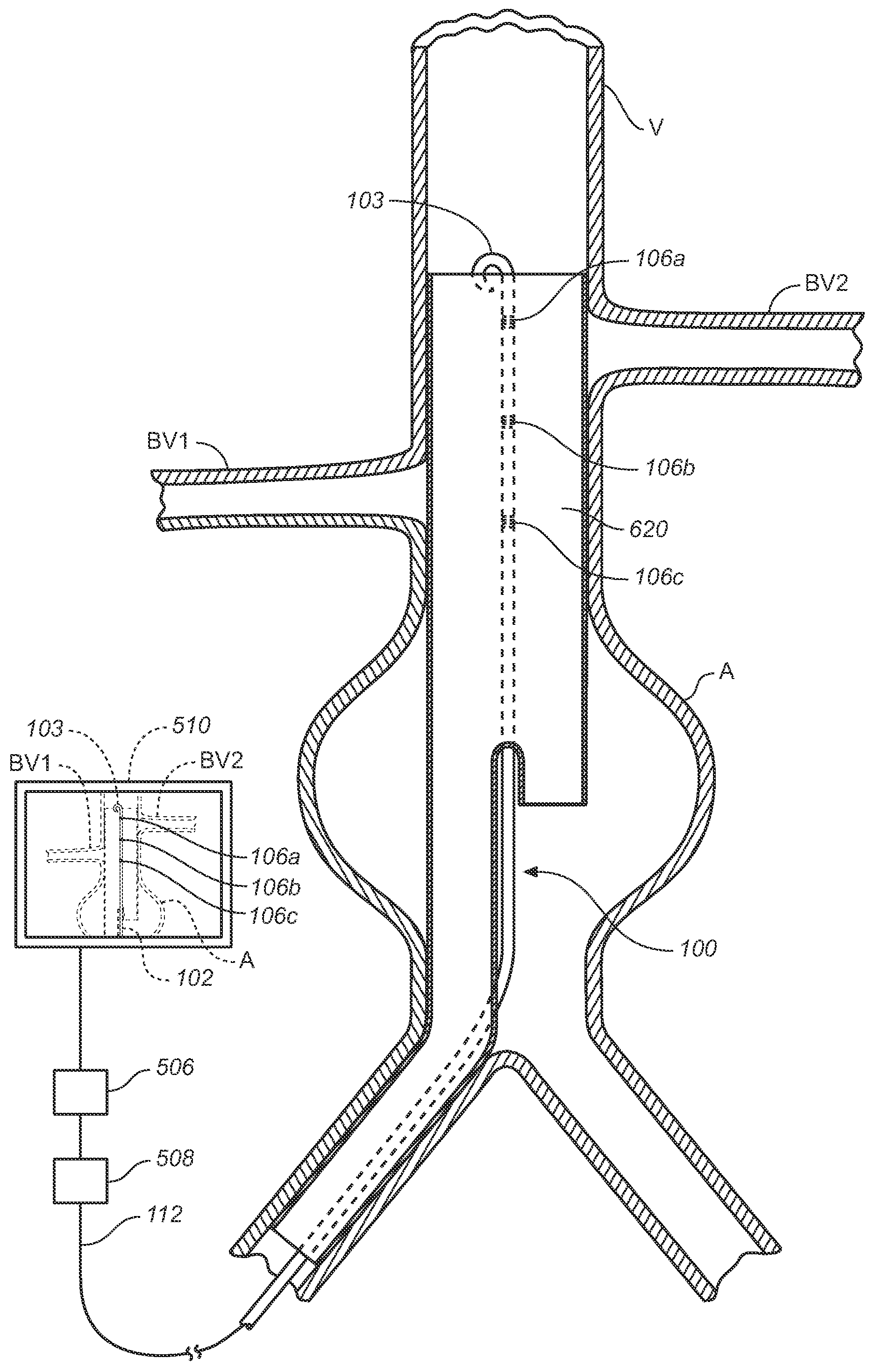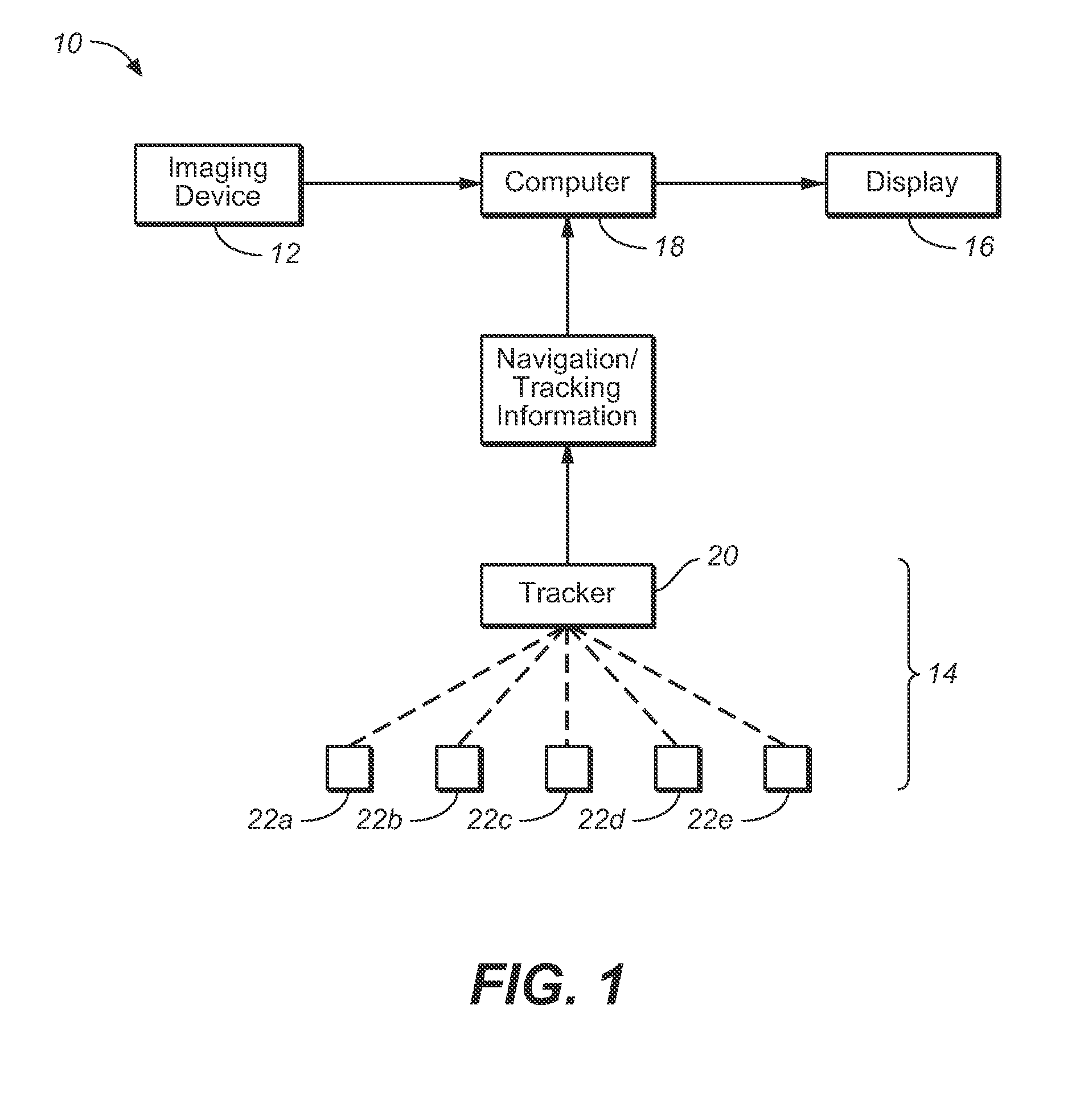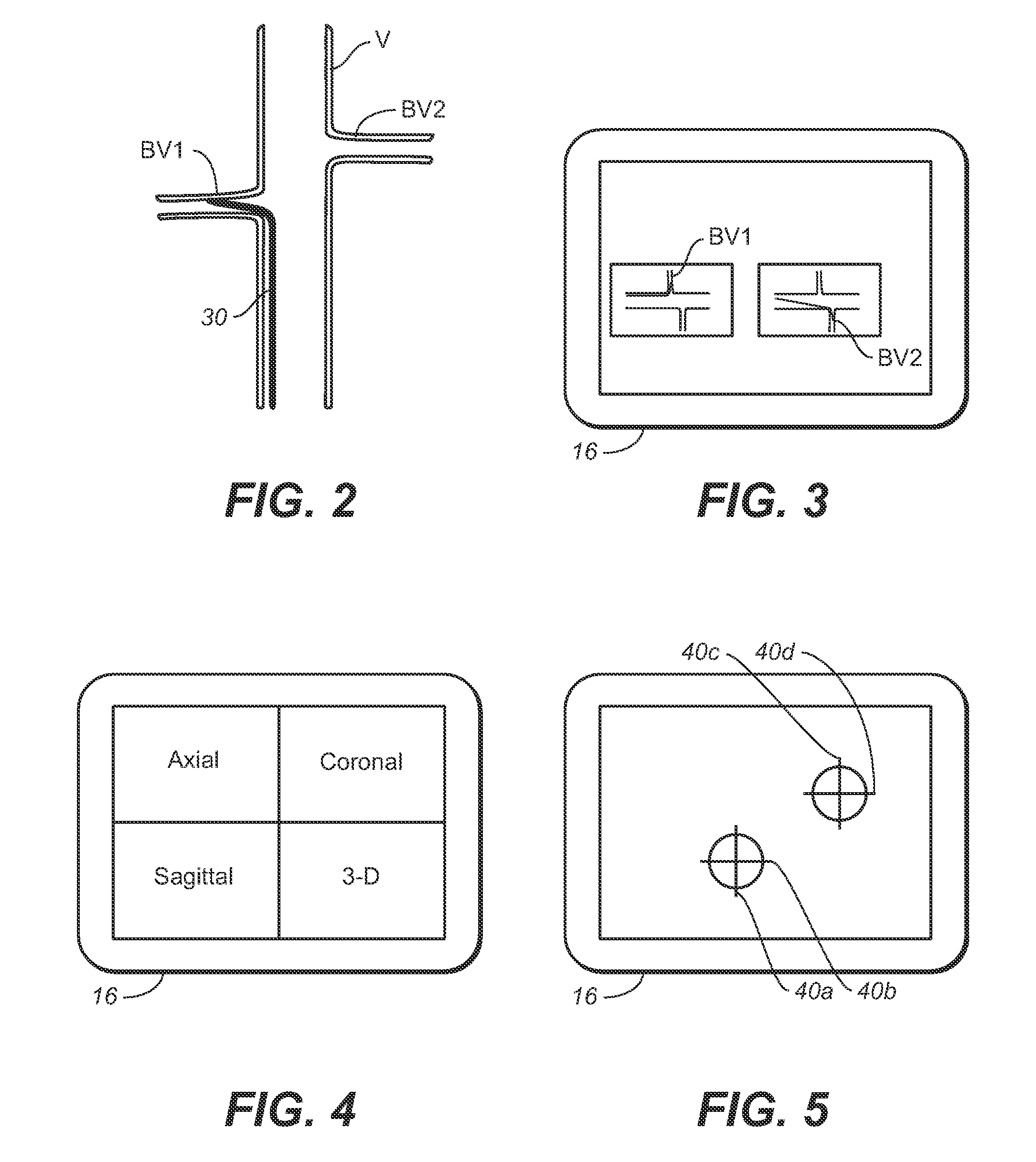Vessel Position and Configuration Imaging Apparatus and Methods
a configuration imaging and vessel technology, applied in the field of prosthesis deployment, can solve the problems of weakened abnormal dilated walls, increased risk of entanglement of these components, and increased complexity of procedures
- Summary
- Abstract
- Description
- Claims
- Application Information
AI Technical Summary
Benefits of technology
Problems solved by technology
Method used
Image
Examples
example 1
[0088]Referring to FIGS. 9A-E, an exemplary operation of system 100 where the tracked elements or markers used are sensing coils and more specifically electromagnetic field (EMF) coils will now be described. For the purposes of the example, the procedure involves the endovascular delivery and deployment of an AAA bifurcated stent-graft in the vicinity of the renal arteries. In the example described below, the procedure can be performed using a preprocedural or intraoperative scan of the vasculature being navigated to generate a three-dimensional model of the navigational path. An exemplary preprocedural scan approach will be described first and an intraoperative scan approach will follow.
Pre-procedural or Preoperative Scan
[0089]First or pre-procedural scan and aortic data acquisition: Prior to the surgical procedure, the patient is scanned using either a CT, CTA, MRI, or MRA scanner to generate a three-dimensional model of the vasculature to be tracked. The abdominal aorta and branc...
example 2
[0118]Referring to FIGS. 10A and 10B, a procedure for locating vessels for prosthesis deployment using system 200 where the tracked elements or markers used are sensing coils and more specifically electromagnetic field (EMF) coils will now be described. For the purposes of the example, the procedure involves the endovascular delivery and deployment of an AAA bifurcated stent-graft in the vicinity of the renal arteries.
[0119]As described above, the patient is prepared for surgery and a cut is made down to a femoral artery and elongated members 302 and 402 are endovascularly advanced toward the renal arteries and their distal portions positioned in the renals using conventional fluoroscopic techniques (FIG. 10A).
[0120]While viewing the fluoroscopic image of the renals and tracked elements or markers 306c and 406c, the markers or sensing coils are aligned with a lower portion of a respective ostium of the renal arteries generally indicated with BV1 and BV2.
[0121]In one variation, after...
example 3
[0139]Referring to FIGS. 15A-C, an exemplary operation of system 800 where electromagnetic coil type tracked elements or markers are used in conjunction with circuit 500 and puncture catheter 1110 will now be described. For the purposes of the example, the procedure involves the endovascular delivery and deployment of an AAA bifurcated stent-graft in the superior to a renal artery.
[0140]Elongated member of catheter 802 is endovascularly advanced from a femoral artery as described above into a branch vessel BV1, which in this example is a renal artery, using conventional fluoroscopic technique. Sheath 805 is withdrawn allowing the distal end 803 to move toward its memory shape helical configuration. As it moves toward its helical configuration the sensor coils are moved toward and / or urged against the inner wall of the branch artery and generally positioned in a helical array (FIG. 15A) about axis A1-A1, which generally corresponds to the center axis of that portion of the artery. Ty...
PUM
 Login to View More
Login to View More Abstract
Description
Claims
Application Information
 Login to View More
Login to View More - R&D
- Intellectual Property
- Life Sciences
- Materials
- Tech Scout
- Unparalleled Data Quality
- Higher Quality Content
- 60% Fewer Hallucinations
Browse by: Latest US Patents, China's latest patents, Technical Efficacy Thesaurus, Application Domain, Technology Topic, Popular Technical Reports.
© 2025 PatSnap. All rights reserved.Legal|Privacy policy|Modern Slavery Act Transparency Statement|Sitemap|About US| Contact US: help@patsnap.com



